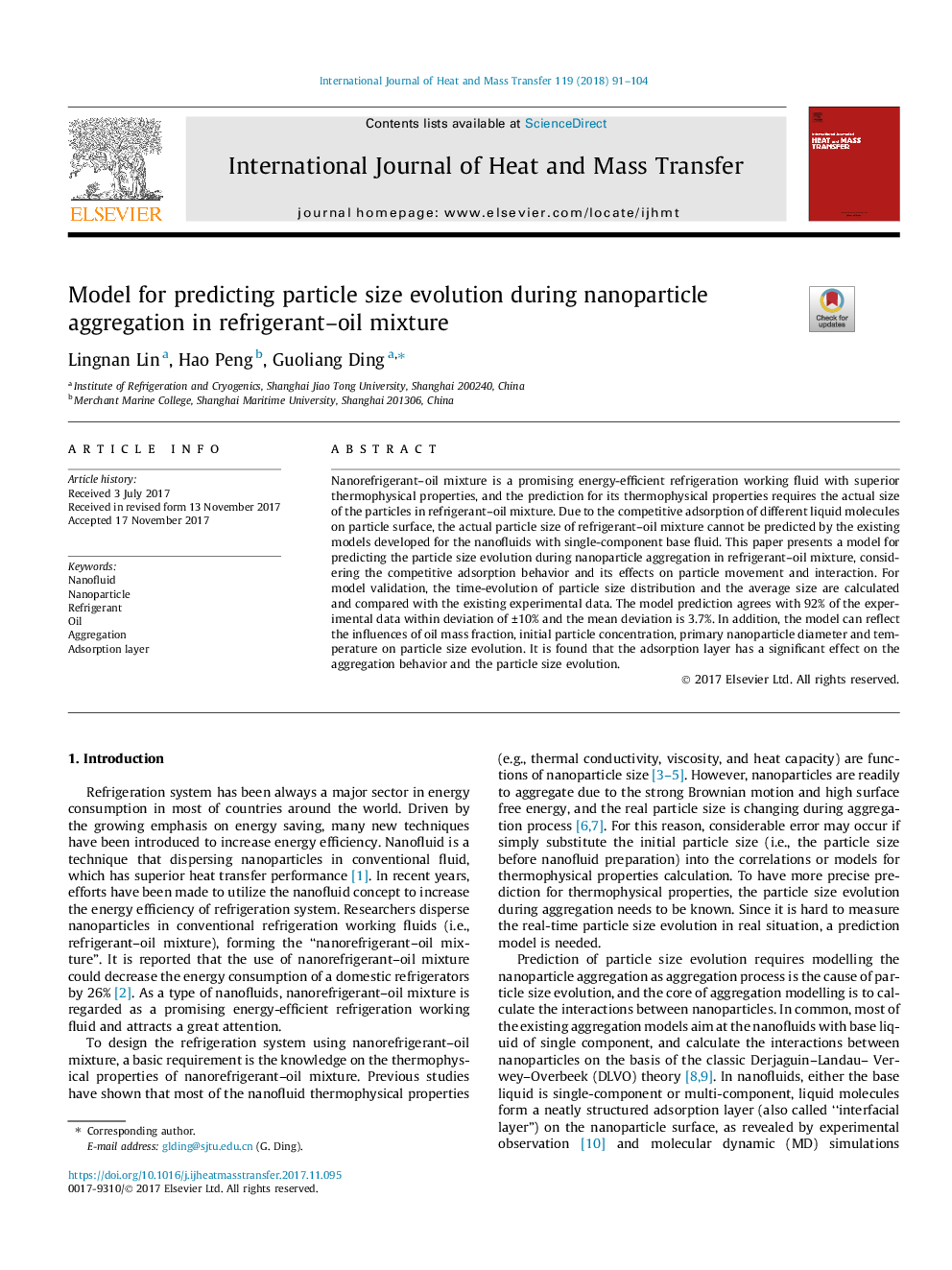| Article ID | Journal | Published Year | Pages | File Type |
|---|---|---|---|---|
| 7054596 | International Journal of Heat and Mass Transfer | 2018 | 14 Pages |
Abstract
Nanorefrigerant-oil mixture is a promising energy-efficient refrigeration working fluid with superior thermophysical properties, and the prediction for its thermophysical properties requires the actual size of the particles in refrigerant-oil mixture. Due to the competitive adsorption of different liquid molecules on particle surface, the actual particle size of refrigerant-oil mixture cannot be predicted by the existing models developed for the nanofluids with single-component base fluid. This paper presents a model for predicting the particle size evolution during nanoparticle aggregation in refrigerant-oil mixture, considering the competitive adsorption behavior and its effects on particle movement and interaction. For model validation, the time-evolution of particle size distribution and the average size are calculated and compared with the existing experimental data. The model prediction agrees with 92% of the experimental data within deviation of ±10% and the mean deviation is 3.7%. In addition, the model can reflect the influences of oil mass fraction, initial particle concentration, primary nanoparticle diameter and temperature on particle size evolution. It is found that the adsorption layer has a significant effect on the aggregation behavior and the particle size evolution.
Related Topics
Physical Sciences and Engineering
Chemical Engineering
Fluid Flow and Transfer Processes
Authors
Lingnan Lin, Hao Peng, Guoliang Ding,
